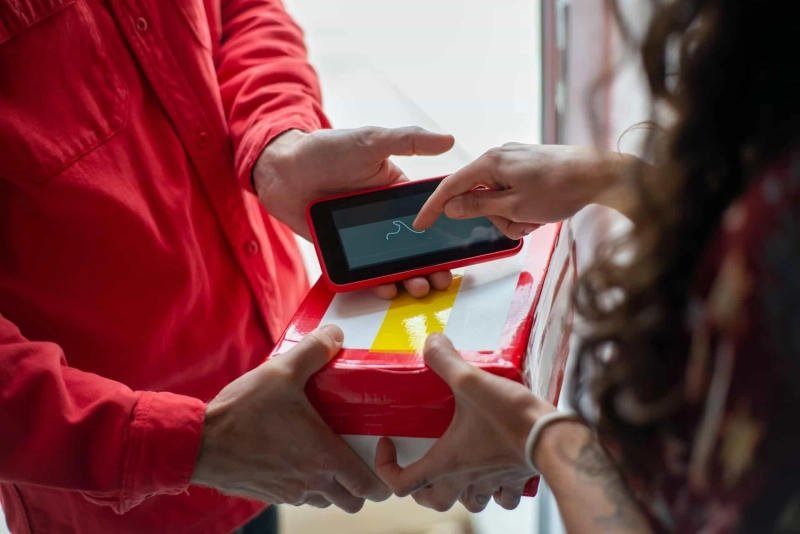Finished product delivery, along with other stages of the sales chain, has a huge impact on the company\'s reputation. That’s why online store owners should pay close attention to this process. Negative customer experience, caused by high shipping costs or long waiting for the parcel, can decrease retention and business profitability, even if you distribute high-quality stuff.
In this article, we’ll discover how to choose the most affordable shipping options to help safely ship clients\' purchases, add value to the brand and increase profit.
Packaging and preparing products for shipment
Online stores first directly interact with buyers while they unbox parcels. Customized, sustainable, and well-designed packages can impress clients equally with the goods inside and set your brand apart from other rivals. With well-thought packing, entrepreneurs may reduce delivery costs and contribute to client engagement. So let’s find out how to prepare for shipping all your printed stuff and which materials to select for packing.
When discussing personalized t-shirts, hoodies, or other soft apparel or house goods (like pillows and blankets), the most creative shipping practice is using poly bags or envelopes as packing materials. They are light, recyclable, and can fit any size of your product, saving space and minimizing expenses.
Polyurethane bags are strong enough to ship goods without damage and can be easily customized with Shopify printed shipping labels. It is also an option to order branded stickers and simply place them on the top of an envelope, add business cards or care instructions on tiny cardboard, etc.
Those sellers, who trade custom jewelry, books, or other craft can use padded mailers for packing customers\' parcels. Bubbled wrap or chopped paper are additional materials that provide extra protection for items and are described in eBay\'s best shipping practices.
If you send several items or fragile ones, like printed mugs, then choosing corrugated boxes will be the best option in terms of product safety. Some retailers use double-walled packages and fillers (air pillows, foam inserts, wood fibers, or paper) to strengthen the parcel.
When you figure out how to pack stuff in the most cost-effective, eco-friendly, and meaningful way, it will be the right time to pay attention to delivery frameworks.
How do I determine the shipping speed?
All courier services have different delivery options. Thus, the standard shipping speed lies between 3-7 business days, depending on the final destination. Remote locations usually take a little longer to reach. And if you plan to merch nationwide with United States Postal Service (USPS), it takes about 2-3 weeks.
Wholesalers and global traders often use United Parcel Service (UPS) to send large packages or sell worldwide. UPS ground shipping speed is 2-5 days on average. The company also provides same-day and next-day delivery options.
It would be beneficial for business owners to partner with multiple services. Each one will be more effective in different situations, and you’ll build a balance between price and time.
It’s worth mentioning that the best shipping practice for eBay vendors is delivering goods with USPS. These two companies are in partnership, allowing reduced fees for transporting parcels.
How to change the shipping speed? Those sellers who use Amazon warehouses for storing products allow clients to choose delivery deadlines at their online stores. Customers should make the following steps in their marketplace accounts: go to Your orders → Change speed → Select another day and time → Confirm.
Understanding eCommerce shipping rates
Before you start delivering parcels from an online store, you should think of a charge you’ll take from each purchase for eCommerce shipping fulfillment. There are several types of rates you can add to your shop checkouts. Let’s get familiar with the most common ones:
- Price-based. You can set up a $5 fee for items under $100 and raise the rate to $10 for each product above that price. This shipping option for small businesses is clear and understandable for every user.
- Weight-based. Here merchants should set the minimum and maximum fee based on the package weight. Thus, you can charge $4 for parcels lower than 5kg and $10 for heavier things.
- Flat rate. With this cheapest shipping option to try, customers will pay the same amount of money for each package, regardless of its characteristics. This way, you encourage buyers to add more items to a single order to save costs.
- Discounts or free shipping. This option helps to increase the store’s conversion rate. But here, entrepreneurs should prevent working at a loss. Shipping costs can be included in the product price to keep the business profitable.
Thus, you can use rates based on different product conditions, make the process simpler, and set up a single fee. One delivery may be more expensive while the other is way cheaper. So in a long ride, you’ll take an average rate.
The Art of Packing: How to Create a Perfect Package Design?
The most popular vs. cheapest shipping options
Before COVID-19, consumers were focused on free and fast delivery experiences. Such preferences threatened small eCommerce businesses because they could hardly compete with large brands for their place in the sun. But the pandemic made adjustments to the way of life in society, and clients have improved their expected shipping timelines.
Now, buyers are more likely to wait up to 8 days for their parcels. Instead, they want to get a perfect delivery experience. And this is an excellent opportunity for eCommerce entrepreneurs to provide cost-saving shipping practices to increase sales and add value to each order. Here are several tips on how to make delivery cheap for sellers and delightful for clients:
- Use suitable materials and the right-sized packaging. Poly mailers, bubble wrap, and air pillows will be good choices.
- Charge flat rates. This is the best shipping practice that will help to predict fees more accurately. Compared to 2020, online users don’t mind paying more if they get a better shipping experience.
- Partner with local couriers. This is the less expensive and quicker way for businesses to communicate with nearby customers. Perhaps, it will help to kill two birds with one stone - ship faster at a lower price.
- Integrate proven eCommerce shipping software. Automated tools like Shipstation or Shiphero will streamline the delivery process by integrating with major trading platforms and simplifying order processing, printing labels, and service pricing.
You can utilize an eCommerce shipping calculator for USPS, UPS, FedEx, and other logistics companies to pick up the most suitable option for each online order...


